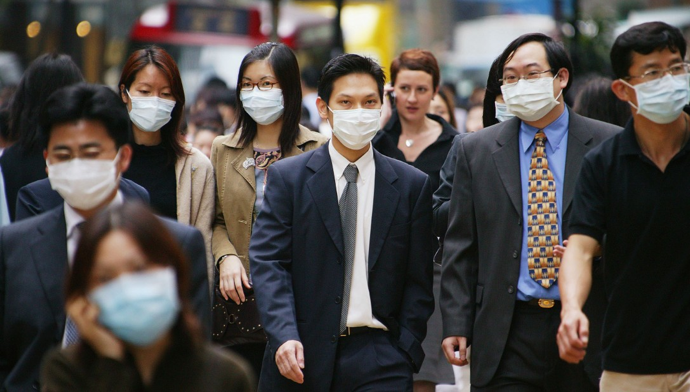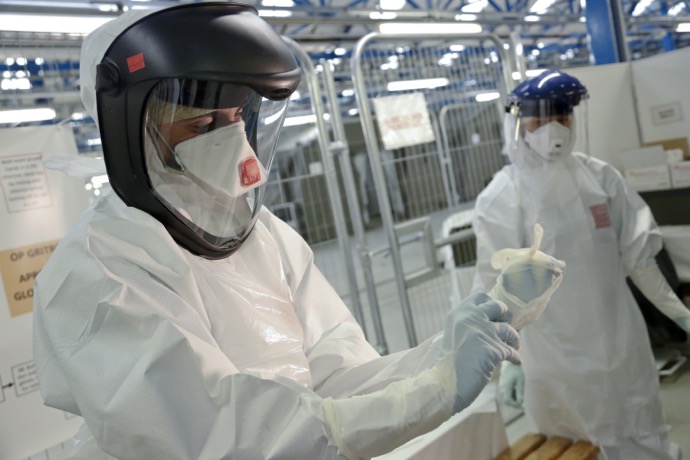Biosafety Levels and the Threat of a Global Pandemic
Thousands of microbes that can pose a threat to human health are being tested or engineered in labs throughout the world. These range from studying the common cold virus to creating biological agents that have the potential to wipe out a significant percentage of humanity. In most cases, labs and storage facilities follow a simple protocol to ensure that the bugs stay contained and pose a minimal risk to workers as well as the population at large. These biosafety levels are generally followed to the letter, but some recent exceptions have raised concerns that we are more vulnerable to an accidental release or act or terror than we may think.
Biosafety Levels

Labs must have proper equipment along with procedures in place to store, access and work with any biological agent that has the potential to spread. Labs must also be rated and inspected to ensure that they are not working with bugs that are more dangerous than what they are designed to handle.
Level 1 is the lowest on the list, and labs work on bugs that pose minimal risk in the big scheme of things. E Coli, rhinovirus and other non-serious agents can be played with in these facilities. They can be experimented with on open tables in standard rooms by technicians who wear minimal protective equipment.
Level 2 facilities must be designed to contain the spread of more dangerous microbes such as those that cause MRSA, or staph infections. Personal protective gear can include body suits, thick gloves and face and eye masks. Testing is often done in bio-safety cabinets which are designed to contain any accidental spills and keep the pathogens from spreading. Labs also have self-closing doors that can be activated in an emergency as well.
Level 3 facilities are designed to prevent microbes that can be inhaled from escaping. This can include tuberculosis and certain flu viruses. Access to these labs is limited to individuals with certain levels of clearance, workers may have immunizations to protect against accidental exposure, and two sets of doors are used to serve as an air lock. Ventilation systems can not use recirculated air, and technicians must wear respirators and full-body suits to protect against exposure.
Level 4 facilities are the most secure and are used to work on some of the most frightening and contagious bugs known to humanity. Viruses and microbes that have no known cures, are easily transmitted and have the potential to kill millions are tested and developed in these facilities. These labs have air locks, decontamination showers, space-like suits with air hoses attached and workers are required to change clothes and shower before entering and exiting facilities. Labs are located in highly-secure and isolated areas in buildings, and work is often done in incubator-like boxes to minimize direct contact with the bugs. There are only a handful of these labs in the United States and throughout the world.
Risk of Contamination
Each level of lab is designed to contain the pathogen in question and minimize risk to workers who may become infected and pass it on to others. Researchers are also only supposed to work with microbes that their respective labs are rated for. However, these facilities are not always as secure as many people think, and some of the testing that goes on involves pathogens that are more dangerous than a lab’s rating.
One example is a university researcher who found a way to manipulate the H1N1 or avian flu virus so that it is impossible to treat if someone gets infected. The goal was to break down the virus to its basic form in order to develop an immunization. However, the finished product has the potential to wipe out tens of millions of people because none of us have immunity or the ability to fight the bug. This lab was in a level 2 facility in middle-America, and most people had no idea that it existed. Imagine if such a virus were to escape and become accidentally or intentionally transmitted to the population at large.
Rick of Compromise
_door.jpg)
The other risk is that security measures, storage systems and containment efforts may not be sufficient during an emergency. Facilities that produce or test some of the most deadly pathogens are not as secure as most people think. A natural disaster, act of war, terror or sabotage can lead to the theft or release of these killers into the population at large. This is probably the biggest threat that humanity faces, yet little is being done to prevent such an occurrence from happening. Keep in mind that it only takes one incident to create a pandemic that we are not prepared to deal with.
The study of pathogens is important and necessary in order to develop vaccines and minimize exposure. However, governments as well as other entities are also hard at work developing super-bugs that can be used for weapons. They’ve been doing so for more than a hundred years, and it was common practice during the Cold War as each side tried to one-up the other. Unfortunately, these bugs still exist and are contained in facilities scattered throughout the world. Couple that with the thousands of other natural pathogens that are stored and tested, and it’s easy to see how it is only a matter of time before one of them gets out and enters the population.
Preparing for such a contingency is nearly impossible, unless you keep a stockpile of high-end biohazard suits and decontamination systems on hand. Quarantine and isolation is probably the best way to prevent being infected and transmitting the bug. However, it can take days or weeks before an outbreak is detected, and by then it may be too late. How prepared are you to deal with such a possibility?















